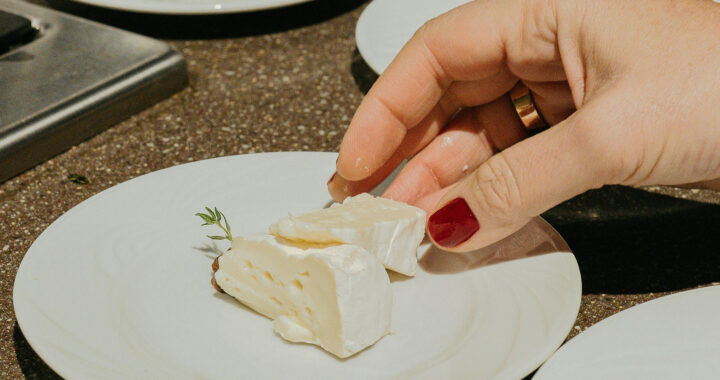Traditional Brie and Camembert cheeses were often covered in a mixture of molds. These resulted in unpredictable flavors, textures, and spoilage. The process of making these cheeses was eventually standardized in the early 20th century following the isolation of the specific Penicillium camemberti strain or white mold. However, according to more recent developments and backed by several studies, this specific white mold is at risk of extinction, thus endangering the established markets for Brie and Camembert cheeses.
Specific Penicillium Camemberti Strain: Here is the Reason Why White Mold Used in Making Brie and Camembert Cheese is at Risk of Extinction
Historical Background
Cheesemakers in several French regions like Normandy and Brie before the 1900s observed that certain cheeses developed a natural, white, velvety rind during aging. These were the precursors to and earlier versions of Brie and Camembert cheeses. Note that the discovery of these cheeses was not the result of any deliberate intervention. It was an incidental occurrence that transpired in the humid and confined environments where these cheeses matured.
Furthermore, before controlled microbiology, the mold growth was inconsistent, and different types of fungi could colonize the cheese, leading to spoilage or undesirable flavors. Nevertheless, during the late 19th century and early 20th century, the field of microbiology was rising and this had widespread implications in food production. Several scientists specifically took an interest in studying the microbes responsible for cheese ripening.
Microbiologists, including Roger Dumas and others, identified and isolated an albino strain of Penicillium camemberti from successful cheese batches around the 1910s. They determined that this specific mold was responsible for the ideal creamy texture and distinct bloomy rind of Brie and Camembert. Cheesemakers beginning in the 1920s started intentionally inoculating cheeses with pure cultures of this mold to ensure consistency and quality.
Risk of Extinction
The albino strains of Penicillium camemberti are replicated through asexual reproduction or cloning. Producers of Brie and Camembert prefer specific white molds that grow uniformly and rapidly. This has resulted in very few standardized strains. All modern strains essentially originate from a very limited genetic pool. This selective breeding is the prime reason why the white molds used in making Brie and Camembert are at risk of becoming extinct.
Specifically, due to asexual reproduction, the albino strains lacked genetic diversity. This has made them less adaptable to environmental changes and more vulnerable to diseases due to bacterial and fungal pathogens and evolving microbial competition. The entire species of Penicillium camemberti is also losing some of its ability to reproduce sexually due to years of undergoing asexual reproduction and the resulting lack of genetic diversity.
The National Centre for Scientific Research, the specific science agency of France, released a memo in January 2024 explaining the looming threats to domestic cheesemaking. Blue cheeses are also under threat but the situation for Brie and Camembert cheeses is much worse. Several French cheesemakers have explained that the situation is not quite that dire but acknowledged that producing Brie and Camembert has become harder in recent years.
Possible Solutions
Several artisanal cheesemakers and microbiologists are researching and reintroducing older strains of Penicillium camemberti from the wild to restore genetic diversity. Hence, by carefully reintroducing these wild strains into cheese production, either by blending them with commercial strains or using them independently, cheesemakers hope to restore genetic diversity and make these white molds more resilient to disease and environmental changes.
Researchers are also exploring ways to introduce variation into the species without compromising its essential cheese-ripening qualities. These include controlled mutation via exposure to low levels of radiation or chemicals to induce mutations, crossbreeding with related mold species, such as Penicillium biform, to introduce new genetic traits while maintaining its cheese-ripening abilities, and growing in different conditions to induce adaptive evolution.
Preservation of different fungal strains in microbial culture collections could help safeguard the species for future use. There are existing microbial conservation efforts from various microbiology institutions and dedicated cheese research centers. These involve maintaining libraries of fungal strains in carefully controlled environments. Some have collected and cataloged different strains of Penicillium camemberti from various cheesemaking regions.
FURTHER READINGS AND REFERENCES
- Crequer, E., Ropars, J., Jany, J., Caron, T., Coton, M., Snirc, A., Vernadet, J., Branca, A., Giraud, T., and Coton, E. 2023. “A New Cheese Population in Penicillium roqueforti and Adaptation of the Five Populations to Their Ecological Niche.” In Evolutionary Applications. 16(8): 1438-1457. Wiley. DOI: 1111/eva.13578
- Harmi, M. 16 January 2024. “French Cheese Under Threat.” National Centre for Scientific Research. Available online
- Ropars, J., Didiot, E., Rodríguez de la Vega, R. C., Bennetot, B., Coton, M., Poirier, E., Coton, E., Snirc, A., Le Prieur, S., and Giraud, T. 2020. “Domestication of the Emblematic White Cheese-Making Fungus Penicillium camemberti and Its Diversification into Two Varieties.” In Current Biology. 30(22): 441-4453. Elsevier BV. DOI: 1016/j.cub.2020.08.082





